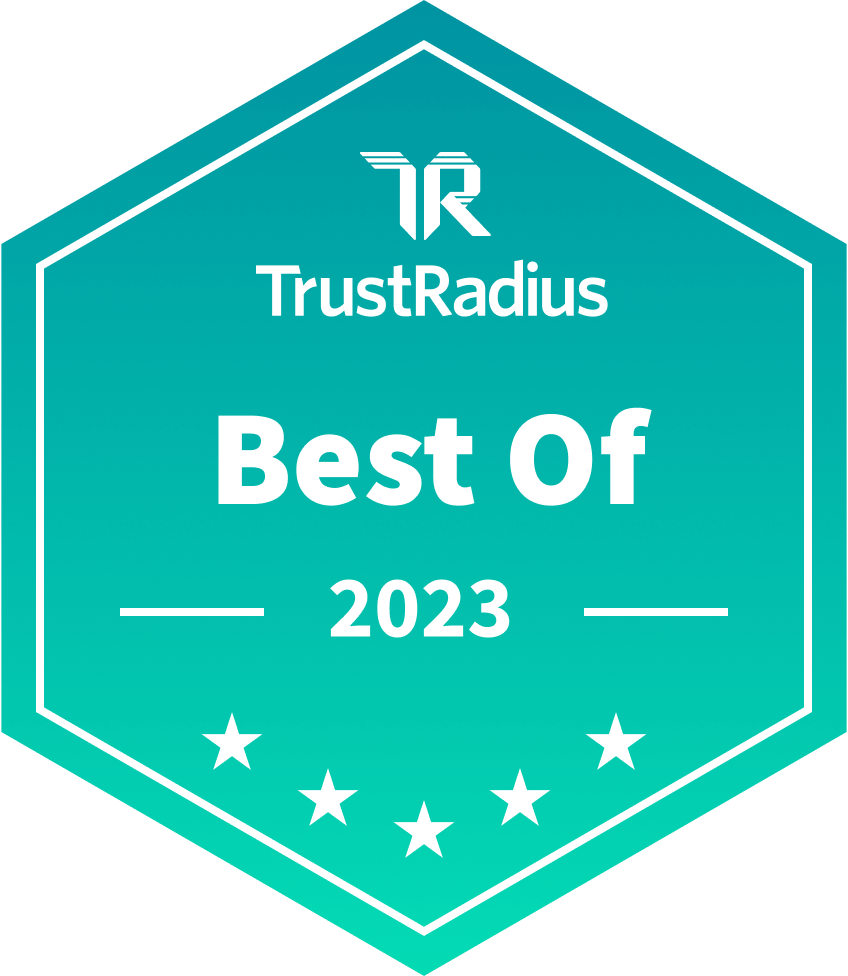Data analytics processes transform data stored in multiple locations into insightful charts and dashboards. This is achieved by integrating diverse data sources, converting raw data into a structured format, modeling data to identify relationships, and generating data visualizations to facilitate data-driven decisions. When people talk about embedded analytics, they are referring to data analytics that is integrated within another software product (application) or web portal.
If you’re looking for an ideal embedded analytics solution, it’s important to consider the different types of embedded BI tools out there. To help with that, this ebook compares the leading embedded analytics solutions across the analytics and BI market.
Types of embedded BI solutions
Before we can compare the best embedded BI tools, it is important to understand the different ways analytics can be embedded. For comparison purposes, here is an overview of how embedding can be achieved:
- Basic embedding via IFrame: Copy and paste HTML code into the end user’s application or web portal.
- Web Components: Behaves as a wrapper to provide simple integration of advanced analytics with minimal coding.
- Advanced embedding using SDK: Embed collections of pre-built dashboards and visualizations into end-user workflows using libraries (such as React SDK or JavaScript SDK).
- Embedding programmatically: Integrate dynamic visualizations or custom visualizations using third-party libraries and the provider's SDK – without directly accessing the provider's interface.
Other ways of customizing and embedding might rely on plugins. These enhance dashboards with extra features like images, comment sections, or charts from other BI tools. The enriched visualizations are then seamlessly integrated into end-user workflows.
To learn more about embedded analytics methods, their pros and cons, and to help you decide which to choose, check out Which Embedding Method is Right for You?
Embedded analytics software comparison
Choosing the best embedded BI tool is crucial for your business and will help to ensure customer and vendor satisfaction. The right solution will drive business growth by seamlessly integrating visualizations, dashboards, or entire user interfaces into a user's workflow – eliminating the need to switch between multiple applications.
To help you evaluate the embedded analytics software options, we’ve created the table below. It outlines the embedding methods of the leading BI tools for embedding analytics currently on the market.
GoodData vs Tableau vs Power BI vs Looker vs Sisense vs QuickSight vs Domo vs Qlik
| Embedded Analytics Provider | IFrame | Web Components | Full Dashboard with Embedding with SDK | Single Visualization Embedding with SDK | Single Visualization Embedding Programmatically with SDK | Plugins SDK* |
|---|---|---|---|---|---|---|
*Plugins are typically built by developers according to a specific need. They can easily be added to dashboards. This more flexible method can complement iFrame and full-dashboard embedding.
IFrames are a popular way to embed content and can be used with many analytics platforms. However, the above-mentioned analytics vendors also offer more advanced embedding options.
GoodData supports Web Components – which is a step above IFrames in terms of flexibility. It ensures the seamless integration of GoodData analytics into web applications by transferring the analytics content in custom HTML tags. GoodData.UI is a React-based framework for crafting custom analytics within React applications. It offers a deeply integrated and fully tailored analytics experience (you can also embed your own or pre-built dashboard plugins).
Tableau offers Tableau Embedding API, which allows developers to integrate Tableau's interactive reports and dashboards into web applications. Tableau's JavaScript API enables the embedding experience to be customized. Additionally, a list of ready-to-use dashboard plugins is provided.
Power BI has its Power BI Embedded service, a Microsoft Azure offering that allows developers to embed interactive Power BI reports and dashboards into applications. The service supports client-side embedding with JavaScript, as well as server-side embedding. Developers can create their own custom visuals using the Power BI Custom Visuals SDK.
Looker enables seamless integration of its dashboards into web applications. Looker Embed SDK provides extensive customization options, which offer a web-component-like experience when combined with custom elements.
Sisense offers Embed SDK for customized embedding of separate visuals. SisenseJS can be used for embedding individual dashboards, widgets, and filters directly into web apps. Meanwhile, Compose SDK can create customized visualizations and other elements – with a list of Sisense plugins also available.
AWS QuickSight enables interactive dashboards and visualizations to be embedded into applications via AWS QuickSight SDK and API. This makes it easy to share analytics within web and mobile applications.
Domo provides Domo Everywhere, an embedding solution that allows users to integrate Domo's dashboards and cards into web applications, portals, or websites. The Domo App Store is also available for embedding custom dashboard plugins.
Qlik offers embedding options with JavaScript libraries. There is also Nebula.js, a collection of libraries and components for developers that can be used to create web component-like embedding for Qlik Sense visualizations. Qlik also offers a list of dashboard plugins to be embedded in Qlik Garden.
If this embedded analytics comparison is insufficient, check out Comparing the Best BI Tools: Selecting the Right Solution for Your Business. In addition to embedding methods, you’ll learn about other key business-driven capabilities.
Key features of an embedded analytics platform
Embedded analytics for SaaS prioritizes fast deployment, cost efficiency, scalability, and seamless integration with your product to enhance the success of SaaS offerings. When selecting the optimal embedding BI tool, consider key features such as self-service visualizations, customizable dashboards, scalability, and competitive pricing.
Self-service visualizations
Self-service visualizations empower end users to produce captivating, interactive visuals through an intuitive drag-and-drop interface. This eliminates the need for a data expert.
| Embedded Analytics Provider | Ease of Creating Reports/Dashboards | AI-driven Features for Simplified Data Exploration | Self-service Support |
|---|---|---|---|
| Low-code/No-code, user-friendly. | Yes | High | |
| User-friendly, easy drag-and-drop. | Yes | High | |
| Simple drag-and-drop but can be cluttered. | Yes | Moderate | |
| Less intuitive for non-technical users. | Yes | Low | |
| User-friendly for basic tasks, complex for advanced customization. | Yes | Moderate | |
| User-friendly, easy drag-and-drop. | Yes | High | |
| User-friendly, easy drag-and-drop. | Yes | High | |
| User-friendly, easy drag-and-drop, no-code. | Yes | High |
Highly customizable dashboards
Customization options are crucial to embedded BI. Users need to be able to finely tailor the appearance and functionality of dashboards (or visualizations) to seamlessly integrate them into the existing interface.
| Embedded Analytics Provider | Range of Visualization Types | Customization Beyond Standard Options | Overall Flexibility |
|---|---|---|---|
| Wide range of visualizations. | Full customization available with React SDK; includes out-of-the-box visualizations. | High | |
| Wide range, but customization can be difficult. | Customization can be challenging; limited advanced integration options. | Moderate | |
| Wide, akin to Excel. | Some visuals have limited customization options. | Moderate | |
| Basic visualizations with lack of customization options. | Limited; primarily serves as a wrapper around iFrame. | Low | |
| Standard types. | Allows detailed customization through code. | High | |
| Standard types. | Customized dashboards are limited. | Low | |
| Standard types. | Less flexibility in customization due to lower prioritization by Domo. | Low | |
| Standard types. | Limited customization; mainly through IFrames and JavaScript libraries. | Low |
Scalability
In embedded analytics, scalability ensures the system can handle growing data volumes and more users as the business expands (without compromising performance). To successfully scale, a BI solution requires seamless integration with end-user applications, ease of analytics delivery, change management, and cost-efficient resource use. All of which help to ensure analytics capabilities grow in line with business needs.
| Embedded Analytics Provider | Scalability Approach | Management and Provisioning |
|---|---|---|
| Shared semantic layer, workspace hierarchy, and inheritance model. Child workspaces inherit settings from the parent workspace. | Automated provisioning of child workspaces. Seamless updates across thousands of user groups, preserving customizations. | |
| Requires use of Tableau Cloud or Server for embedding and sharing. | Dashboards localized on devices via Tableau Desktop can lead to multiple conflicting versions of the same metrics – as various versions may exist across different user devices. | |
| Managed through service principals or master accounts. | Limited by a 1,000 workspace cap, which can affect scalability. | |
| Separate instances provisioned for scalability. | Scales efficiently for enterprise access, offering similar flexibility to GoodData. | |
| Sometimes dashboards created for individual customers are required. | Dashboard inheritance challenges; additional effort may be required for custom dashboards. | |
| Scaling requires integration with additional AWS products. | Scalability contingent on understanding and managing AWS data roles. | |
| Separate instances provisioned for scalability. | Similar to GoodData. | |
| Separate instances provisioned for scalability. | Similar to GoodData. |
Pricing
An embedded BI solution’s pricing model should focus on user access and interaction within a single-user environment. Ideally, the model shouldn’t require payment for each individual user or be consumption-based. Below we outline the pricing models of the different vendors.
| Embedded Analytics Provider | Pricing Model | Limitations | Cost Predictability |
|---|---|---|---|
| Per-workspace | No restrictions on users or workspaces. Unlimited users with different permissions. | Transparent pricing, predictable for future expansions. | |
| Usage-based | Limited options for more advanced integration and use cases. | Costs rise with increased user interaction, making future costs unpredictable. | |
| Node type and number of nodes | Limited computing resources and capacity for data loaded. | Costs for additional nodes and faster data processing. | |
| Based on number of separate instances | Tiers include a set number of users, upgrades, and queries. Exceeding tiers incurs extra costs. | Transparent cost calculation based on number of instances. | |
| Customized based on use case | No public information available for this comparison. | No public information available for this comparison. | |
| Per-session | Costs vary between author and reader roles. | Using Amazon CloudWatch for tracking and cost management; more user interaction increases costs unpredictably. | |
| Consumption-based | Requires credits for platform usage. | DomoStats monitors usage; costs increase with usage, making future costs unpredictable. | |
| Consumption-based | Restricted by data storage and feature availability. | Future consumption and costs are unpredictable, scaling with data volume. |
Check out our other comparisons of GoodData alternatives
Head over to these resources for more detailed analysis of how we compare to leading GoodData alternatives:
AWS QuickSight Alternative: Choosing the Right BI Tool for Your Needs
Sisense Alternative: Elevate Your Analytics Game with Dynamic Solutions
Tableau Alternative: Addressing Challenges and Solutions for Modern Analytics
Qlik Alternative: Which tool is better for your analytics?
Next steps with GoodData
Still unsure whether to choose GoodData? Get a free GoodData trial for some first-hand experience. Have questions or want to see real-time use cases? Request a demo for a platform walkthrough.
Note: The above evaluation of features is based on our best understanding of publicly available information available at the time of publishing (Apr ‘24). To understand more specific details and feature differences, readers are encouraged to perform their own research. All of the product names, logos, and brands used are for identification purposes only and remain the property of their respective owners. Use of them does not imply any affiliation with or endorsement by them.
Continue Reading This Article
Enjoy this article as well as all of our content.
Does GoodData look like the better fit?
Get a demo now and see for yourself. It’s commitment-free.













